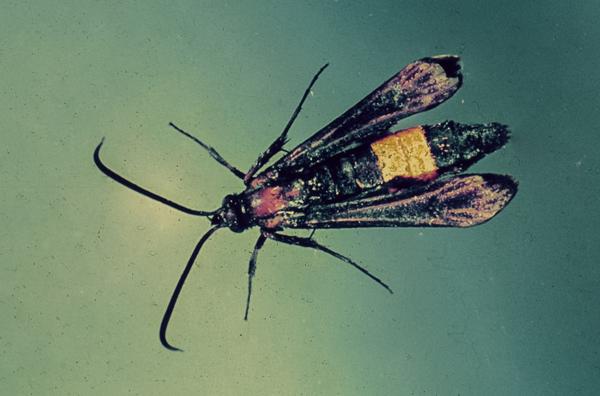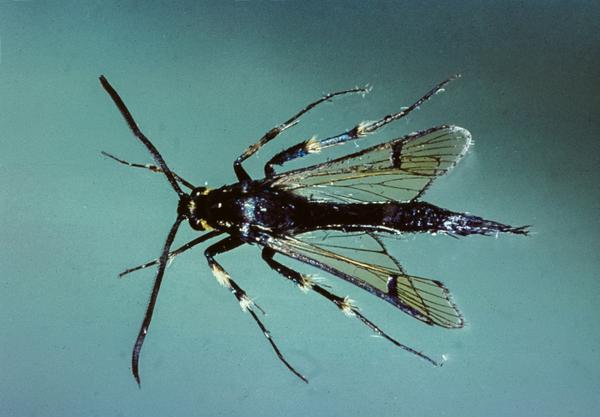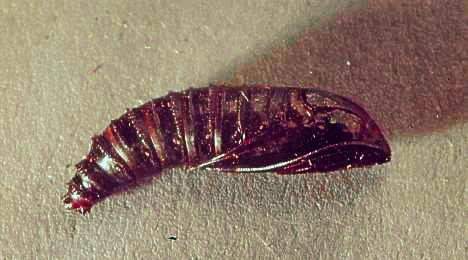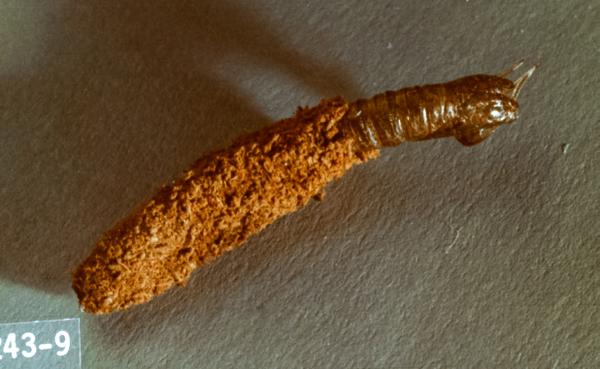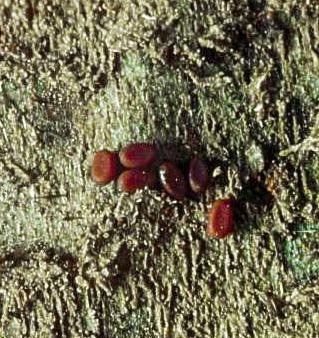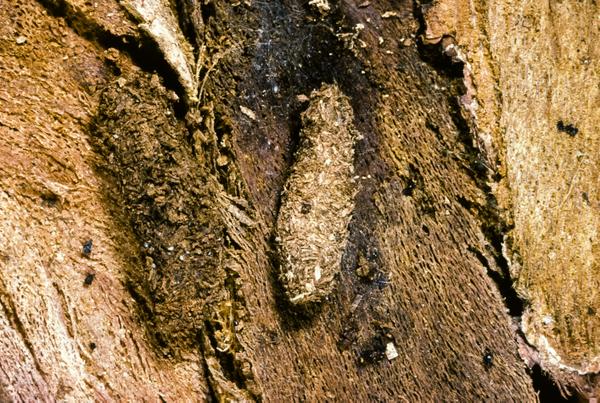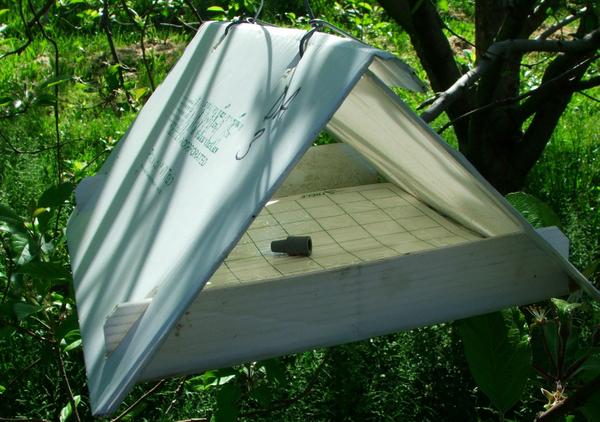Background and Description
Peachtree borers (Synanthedon exitiosa; PTB) are clearwing moths, native to North America and a major pest of peach, cherry, plum, nectarine, and apricot.
Adult PTB are sexually dimorphic: females are dark blue with two orange bands on the abdomen and have opaque front wings, while males resemble small wasps, with four narrow yellow bands on the abdomen and clear wings. Females are slightly larger, with wingspans of 11/3 to 11/2 inches (33 to 38mm) versus the 1 to 11/4 inches (25 to 32mm) found on males. Pupae are 1/2 inch (12.5mm) long, dark brown to black, and have stiff spines on their backs. Mature larvae are about 11/4 inches (32mm) long, cream-colored, and have brown heads. Eggs are 1/50-inch (0.5mm) ovals, reddish-brown, and deposited singly or in small groups on the trunk, lower limbs, or soil.
Life history
PTB overwinter as larvae of various sizes under tree bark. Larvae may begin to feed during warm spells, and some larvae will construct silken coverings called hibernaculae. By early spring, mature larvae will move just beneath the soil line and pupate. The pupal stage can last 18 to 30 days, after which adults emerge and mate. (Unlike most moths, PTB are active during the day, mostly between late morning and early afternoon.) Mated females deposit anywhere from 200 to 800 eggs near the bases of trees, with eggs hatching in 9 to 10 days. Larvae immediately enter the bark, usually through wounds, and begin feeding and growing. There is one generation of PTB a year.
Damage
The larval stage of PTB is an indirect pest of stone fruit trees. Larvae tunnel primarily into the lower trunk and roots, feeding on growing tissue and inner bark. (This is in contrast to lesser peachtree borer, which may feed on any part of the tree.) Root feeding leads to reduced crop bearing capacity due to lack of nutrient uptake, while heavy trunk feeding can girdle the tree and cause death. Younger trees are particularly susceptible, but older trees may also exhibit stunted growth, yellow foliage, and loss of productivity. Usually, infested sites are most easily spotted by frass- and soil-contaminated gum oozing from the trunk. Empty brown pupal cases called exuviae often appear around the base of damaged trees or inside the larval galleries.
Monitoring and control
Control of PTB is most effective in the brief interval between adult emergence and egg hatch, and pheromone traps are the best way to determine emergence. Insecticides should be applied 8 to 16 days after the first adults are detected in the trap. A low pressure handgun application that thoroughly wets the trunk is needed to ensure good control against newly hatching larvae. Since there is only one generation per year, only one spray is needed to control PTB.
Pheromones can also be used for mating disruption. Commercial pheromone dispensers are placed in orchards and release large amounts of synthetic sex pheromones that hinder males ability to find females and therefore prevent eggs from being fertilized.
Publication date: Feb. 23, 2015
N.C. Cooperative Extension prohibits discrimination and harassment regardless of age, color, disability, family and marital status, gender identity, national origin, political beliefs, race, religion, sex (including pregnancy), sexual orientation and veteran status.

